-
 Bitcoin
Bitcoin $115100
-2.99% -
 Ethereum
Ethereum $3642
-1.38% -
 XRP
XRP $3.027
-5.51% -
 Tether USDt
Tether USDt $1.000
-0.05% -
 BNB
BNB $763.4
-1.32% -
 Solana
Solana $177.2
-5.42% -
 USDC
USDC $0.9999
-0.02% -
 Dogecoin
Dogecoin $0.2247
-6.47% -
 TRON
TRON $0.3135
0.23% -
 Cardano
Cardano $0.7824
-4.46% -
 Hyperliquid
Hyperliquid $42.53
-0.97% -
 Stellar
Stellar $0.4096
-6.09% -
 Sui
Sui $3.662
-2.61% -
 Chainlink
Chainlink $17.63
-3.57% -
 Bitcoin Cash
Bitcoin Cash $536.3
2.94% -
 Hedera
Hedera $0.2450
0.34% -
 Avalanche
Avalanche $23.23
-3.15% -
 Litecoin
Litecoin $112.2
-1.23% -
 UNUS SED LEO
UNUS SED LEO $8.976
-0.30% -
 Shiba Inu
Shiba Inu $0.00001341
-2.72% -
 Toncoin
Toncoin $3.101
-2.44% -
 Ethena USDe
Ethena USDe $1.001
-0.05% -
 Uniswap
Uniswap $10.08
-1.97% -
 Polkadot
Polkadot $3.938
-2.77% -
 Monero
Monero $323.9
0.87% -
 Dai
Dai $0.9999
-0.02% -
 Bitget Token
Bitget Token $4.481
-1.69% -
 Pepe
Pepe $0.00001199
-5.94% -
 Aave
Aave $288.2
-0.68% -
 Cronos
Cronos $0.1279
0.36%
How to deal with the monthly moving average bullish + weekly line stagflation + daily line Yin Bao Yang?
A monthly bullish MA with weekly stagflation and a daily Yin Bao Yang suggests long-term strength amid short-term indecision—favor partial entries with tight risk control.
Jul 24, 2025 at 11:29 am
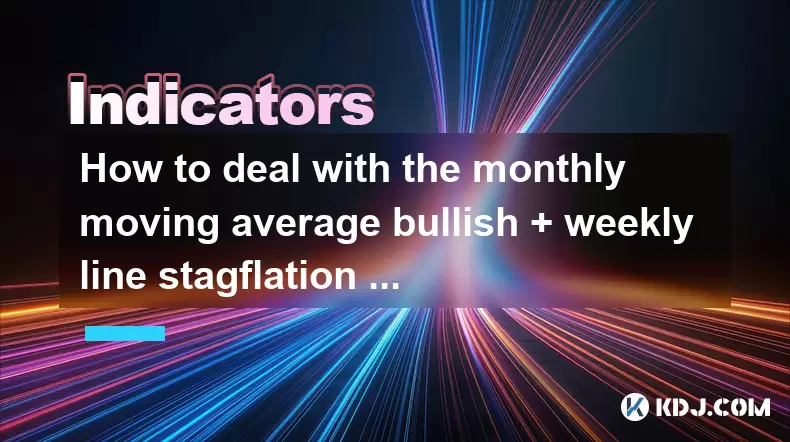
Understanding the Monthly Moving Average Bullish Signal
When the monthly moving average bullish signal appears, it indicates that the long-term trend of the cryptocurrency is shifting upward. This signal is typically confirmed when the closing price of the current month crosses above the 12-month simple moving average (SMA) or the 12-month exponential moving average (EMA). Traders interpret this as a strong foundational shift in market sentiment. The monthly chart filters out short-term noise, making this signal particularly reliable for strategic positioning. To verify this condition:
- Open a monthly candlestick chart on a platform such as TradingView or Binance.
- Apply the 12-period SMA or EMA to the chart.
- Confirm that the most recent candle’s close is above the moving average line.
- Check volume trends during the crossover to validate buying pressure.
This signal suggests that large institutional or long-term investors may be accumulating positions. However, it does not guarantee immediate price increases, especially if conflicting signals appear on shorter timeframes.
Interpreting Weekly Line Stagflation in Crypto Markets
The term weekly line stagflation refers to a technical pattern where price action on the weekly chart shows little to no movement despite high trading volume or volatility expectations. In cryptocurrency trading, this often manifests as a tight consolidation range, with candles forming small bodies and overlapping highs and lows. This condition reflects market indecision or equilibrium between buyers and sellers.
To identify weekly stagflation:
- Switch to the weekly timeframe on your trading platform.
- Look for three or more consecutive candles with minimal price change (e.g., less than 5% movement).
- Observe volume indicators—volume may remain flat or slightly elevated without a breakout.
- Confirm that technical indicators like MACD or RSI show neutral readings (e.g., MACD lines flat around zero, RSI near 50).
This condition suggests that although the monthly trend is bullish, the intermediate-term momentum is stalling. It may precede a breakout or a pullback, depending on how daily dynamics evolve.
Decoding the Daily Line Yin Bao Yang Pattern
The daily line Yin Bao Yang is a Japanese candlestick pattern that occurs when a large bullish (yang) candle completely engulfs the body of the previous bearish (yin) candle on the daily chart. This reversal pattern indicates a potential shift from selling to buying pressure within a 24-hour period.
To detect this pattern accurately:
- Navigate to the daily chart of the cryptocurrency.
- Identify a bearish red candle followed by a bullish green candle.
- Ensure the real body of the green candle fully covers the real body of the red candle (not necessarily the wicks).
- Confirm the engulfing candle has above-average volume to support the reversal.
This pattern gains more significance when it appears near a key support level or after a prolonged downtrend. In the context of a monthly bullish MA and weekly stagflation, the Yin Bao Yang may signal that short-term bears are losing control and bulls are re-entering.
Strategic Positioning Amid Conflicting Timeframe Signals
When facing a monthly moving average bullish, weekly stagflation, and daily Yin Bao Yang, traders must balance long-term optimism with short-term caution. The strategy should focus on risk-managed entry rather than aggressive positioning.
Recommended actions include:
- Wait for confirmation on the weekly chart: Monitor whether the next weekly candle breaks above the consolidation range with strong volume.
- Use the daily Yin Bao Yang as a trigger for partial entry: Allocate a small portion (e.g., 20–30%) of your intended position after the engulfing candle closes.
- Set a stop-loss below the low of the Yin (bearish) candle to protect against false breakouts.
- Watch for retest of the monthly moving average as dynamic support—price holding above it reinforces the bullish structure.
- Avoid full commitment until weekly momentum resumes; stagflation can extend for several weeks.
This layered approach allows traders to participate in potential upside while respecting the lack of intermediate-term momentum.
Using Indicators to Confirm Confluence
To strengthen the analysis, combine price action with key technical indicators across timeframes.
- On the monthly chart, ensure the 200-week MA is sloping upward and price is above it.
- On the weekly chart, apply the ADX (Average Directional Index); a reading below 20 confirms weak trend strength, aligning with stagflation.
- On the daily chart, use volume profile to identify high-volume nodes near the Yin Bao Yang candle—this shows where institutional activity may be concentrated.
- Add the Ichimoku Cloud on the daily chart: a bullish signal occurs when price moves above the cloud and the Tenkan-sen crosses above Kijun-sen.
- Monitor on-chain data via platforms like Glassnode: rising exchange outflows and increasing holder supply support the monthly bullish thesis.
These tools help filter out noise and confirm whether the Yin Bao Yang is a genuine reversal or a temporary bounce.
Managing Risk and Trade Execution
Given the mixed signals, risk management is critical. A structured execution plan should include:
- Position sizing: Limit initial exposure to 25% of planned capital.
- Trailing stop mechanism: Use a daily ATR (Average True Range) multiplier (e.g., 1.5x ATR) to set dynamic stop-loss levels.
- Scaling in: Add to the position only if the weekly chart shows a confirmed breakout (e.g., close above the 5-week high with volume surge).
- Avoid leverage during stagflation phases—low volatility can precede high volatility, increasing liquidation risk.
- Monitor key resistance levels derived from Fibonacci extensions or historical price clusters.
Trade execution should occur during high-liquidity periods, such as UTC 00:00–04:00 or 12:00–16:00, to ensure fill reliability on major exchanges.
Frequently Asked Questions
What does it mean if the Yin Bao Yang appears but volume is low?
A low-volume Yin Bao Yang lacks confirmation from market participants. It may represent short-covering rather than genuine buying interest. In such cases, the pattern is less reliable, especially under weekly stagflation. Wait for a follow-through candle with strong volume before acting.
Can weekly stagflation last more than four weeks?
Yes, weekly stagflation can persist for five to eight weeks, particularly during macroeconomic uncertainty or low market participation (e.g., holiday seasons). During such periods, price often trades within a narrow band, and breakout direction depends on external catalysts like regulatory news or macro data.
How do I adjust my strategy if the monthly MA turns bearish later?
If the monthly closing price falls below the 12-month MA, the primary trend shifts bearish. At that point, exit long positions regardless of daily patterns. Reassess for short opportunities only if lower timeframes confirm breakdowns with volume.
Is the Yin Bao Yang more reliable in high-cap or low-cap cryptos?
The pattern is more reliable in high-cap cryptocurrencies (e.g., BTC, ETH) due to deeper liquidity and less manipulation. In low-cap altcoins, large candles can be caused by pump-and-dump schemes, making the engulfing pattern less trustworthy without on-chain or volume confirmation.
Disclaimer:info@kdj.com
The information provided is not trading advice. kdj.com does not assume any responsibility for any investments made based on the information provided in this article. Cryptocurrencies are highly volatile and it is highly recommended that you invest with caution after thorough research!
If you believe that the content used on this website infringes your copyright, please contact us immediately (info@kdj.com) and we will delete it promptly.
- Kiyosaki's Crypto Playbook: Ditching Paper for Real Assets Like Bitcoin
- 2025-07-25 22:30:11
- Satoshi-Era Whales Stir the Bitcoin Pot: What's the Deal?
- 2025-07-25 22:30:12
- Pi Coin Value in Indian Rupees (INR) 2024: Decoding the Hype
- 2025-07-25 21:45:50
- Crypto Investing: Top Picks and Meme Coin Mania in '25
- 2025-07-25 21:52:07
- Ark Invest's Portfolio Rebalance: Coinbase, Block, and the Crypto Shift
- 2025-07-25 21:52:07
- Bitcoin's Wild Ride: Sell-offs, Volatility, and What's Next
- 2025-07-25 21:55:18
Related knowledge

How to interpret that the KDJ D line is downward for a long time but the price is sideways?
Jul 25,2025 at 07:00pm
Understanding the KDJ Indicator and Its ComponentsThe KDJ indicator is a momentum oscillator widely used in cryptocurrency trading to assess overbough...

What does it mean that the KDJ indicator forms a double bottom at a low level?
Jul 25,2025 at 05:08pm
Understanding the KDJ Indicator in Cryptocurrency TradingThe KDJ indicator is a momentum oscillator widely used in cryptocurrency trading to identify ...
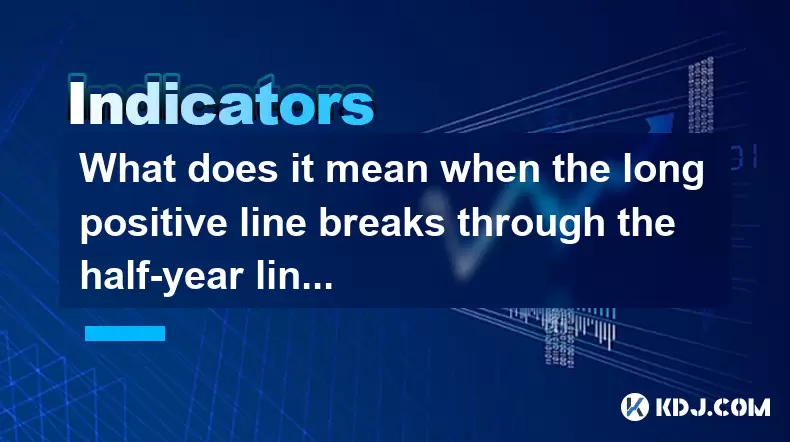
What does it mean when the long positive line breaks through the half-year line and then steps back?
Jul 25,2025 at 06:49pm
Understanding the Long Positive Line in Candlestick ChartsIn the world of cryptocurrency trading, candlestick patterns play a vital role in technical ...
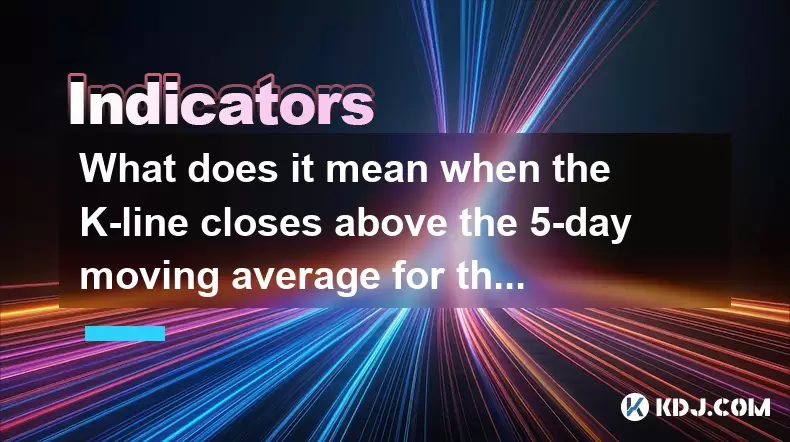
What does it mean when the K-line closes above the 5-day moving average for three consecutive days?
Jul 25,2025 at 10:07pm
Understanding the K-line and 5-day Moving AverageThe K-line, also known as a candlestick, is a critical charting tool used in technical analysis to re...
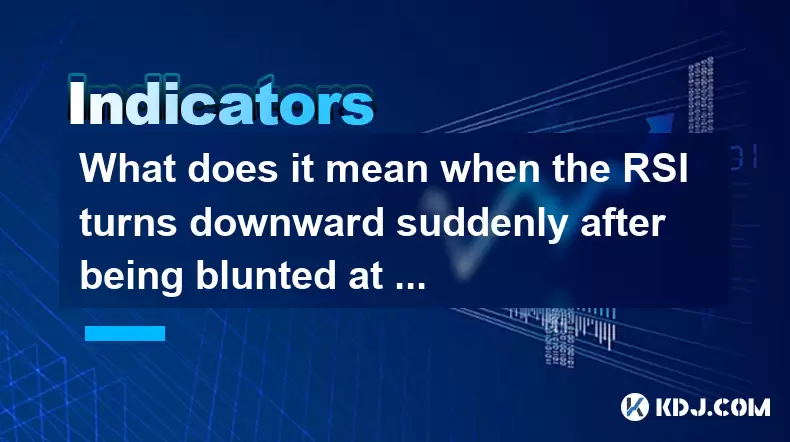
What does it mean when the RSI turns downward suddenly after being blunted at a high level?
Jul 25,2025 at 04:00pm
Understanding the RSI and Its Role in Technical AnalysisThe Relative Strength Index (RSI) is a momentum oscillator that measures the speed and change ...
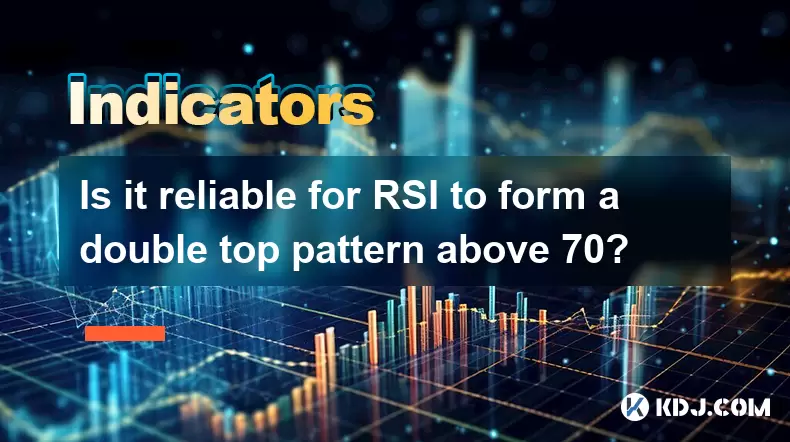
Is it reliable for RSI to form a double top pattern above 70?
Jul 25,2025 at 04:49pm
Understanding the RSI Indicator and Its Role in Technical AnalysisThe Relative Strength Index (RSI) is a momentum oscillator that measures the speed a...

How to interpret that the KDJ D line is downward for a long time but the price is sideways?
Jul 25,2025 at 07:00pm
Understanding the KDJ Indicator and Its ComponentsThe KDJ indicator is a momentum oscillator widely used in cryptocurrency trading to assess overbough...

What does it mean that the KDJ indicator forms a double bottom at a low level?
Jul 25,2025 at 05:08pm
Understanding the KDJ Indicator in Cryptocurrency TradingThe KDJ indicator is a momentum oscillator widely used in cryptocurrency trading to identify ...

What does it mean when the long positive line breaks through the half-year line and then steps back?
Jul 25,2025 at 06:49pm
Understanding the Long Positive Line in Candlestick ChartsIn the world of cryptocurrency trading, candlestick patterns play a vital role in technical ...

What does it mean when the K-line closes above the 5-day moving average for three consecutive days?
Jul 25,2025 at 10:07pm
Understanding the K-line and 5-day Moving AverageThe K-line, also known as a candlestick, is a critical charting tool used in technical analysis to re...

What does it mean when the RSI turns downward suddenly after being blunted at a high level?
Jul 25,2025 at 04:00pm
Understanding the RSI and Its Role in Technical AnalysisThe Relative Strength Index (RSI) is a momentum oscillator that measures the speed and change ...

Is it reliable for RSI to form a double top pattern above 70?
Jul 25,2025 at 04:49pm
Understanding the RSI Indicator and Its Role in Technical AnalysisThe Relative Strength Index (RSI) is a momentum oscillator that measures the speed a...
See all articles

























































































